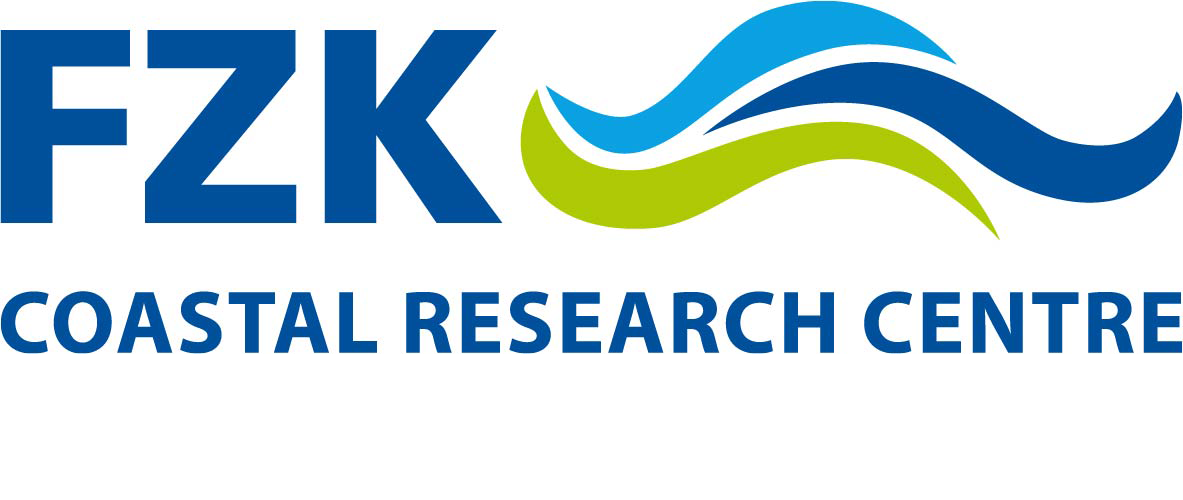Research topics
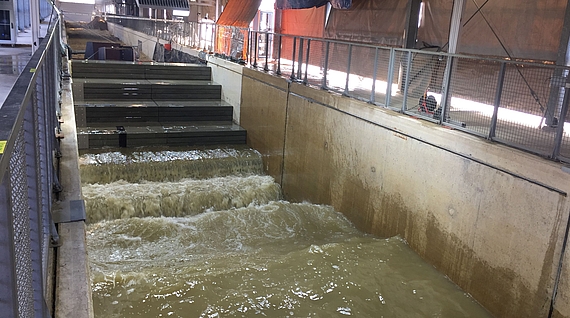
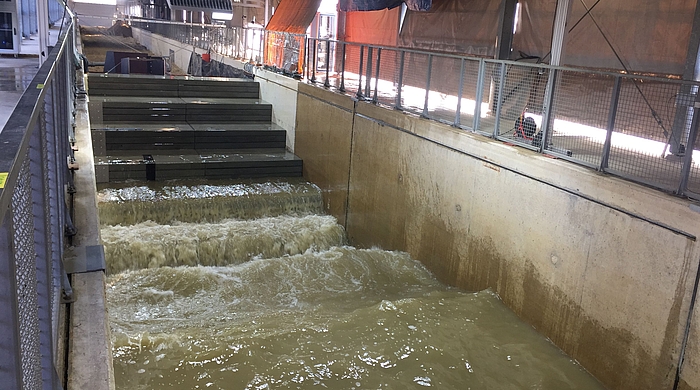
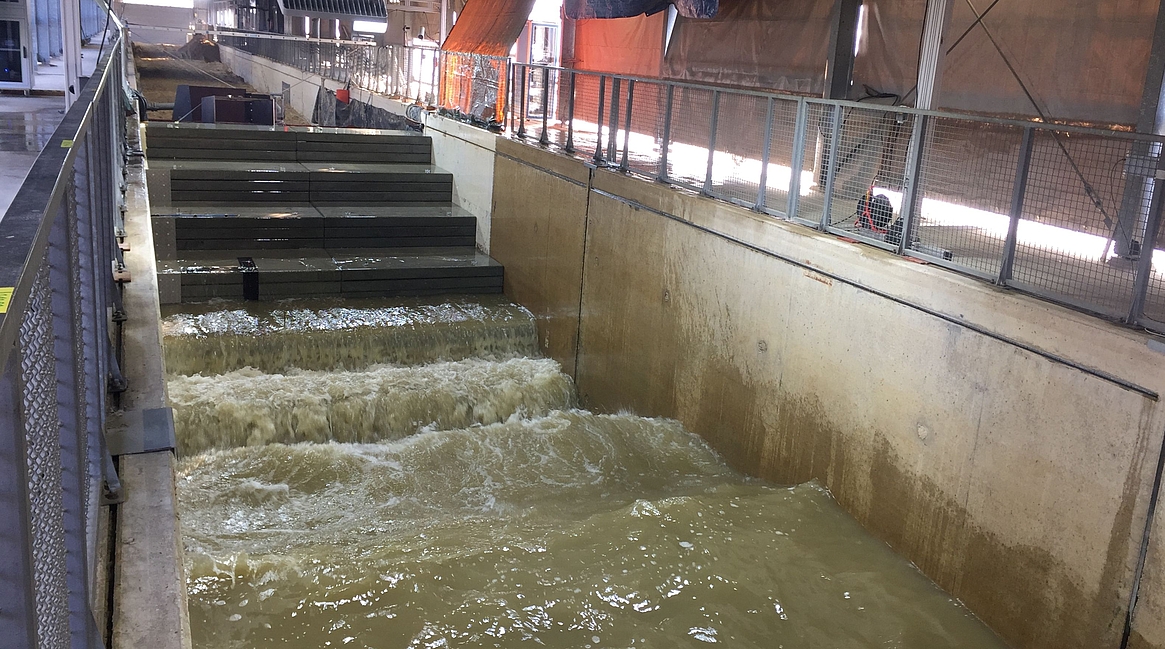 ©
Forschungszentrum Küste
©
Forschungszentrum Küste
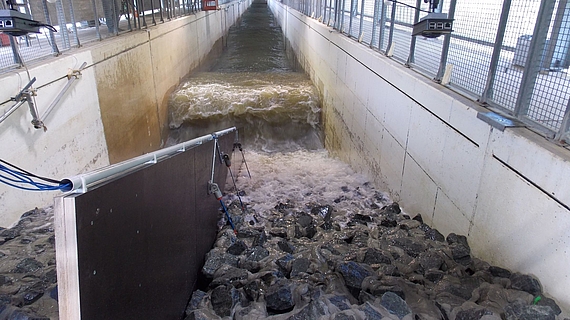
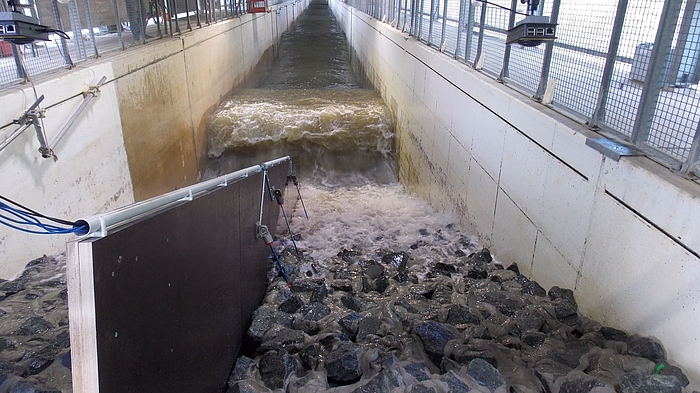
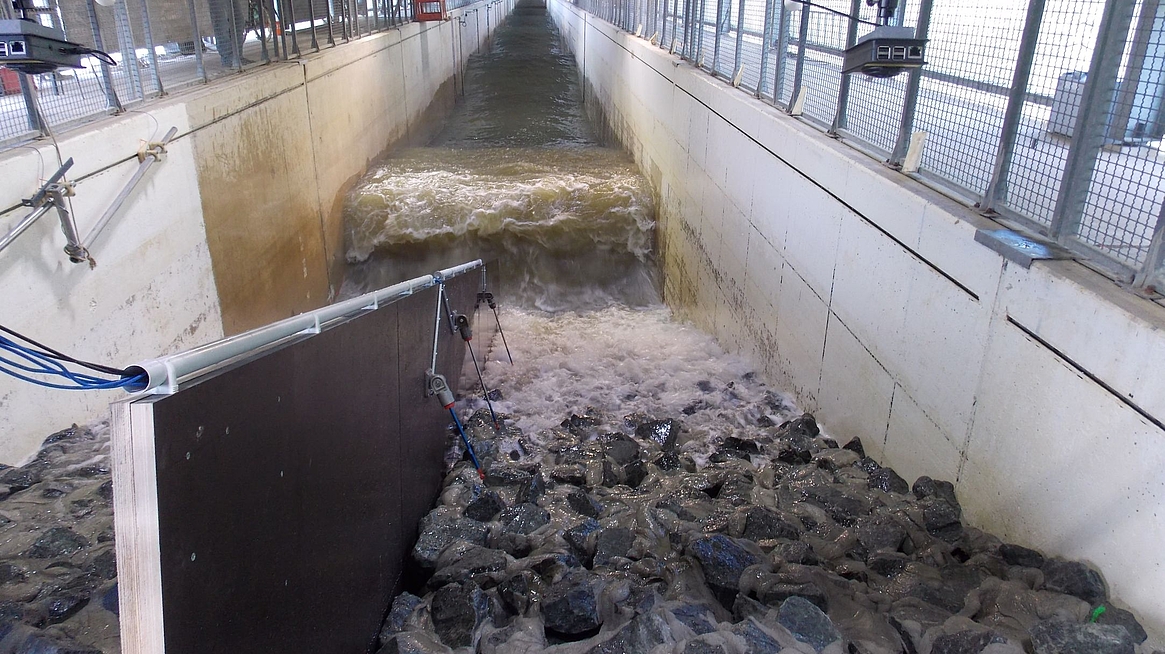 ©
Forschungszentrum Küste
©
Forschungszentrum Küste
Coastal Structures
Large parts of the world's population live in coastal areas, and the coast has always been a focal point for tourism and recreation, as well as for industry and agriculture. Coastal protection structures such as dykes, revetments or breakwaters are not only used to prevent coastal receding, but above all to protect the country behind it, its infrastructure and in particular the people living there from flooding and storm surge damage. The structures are exposed to extreme loads from wave attack and at the same time have to meet high safety standards. Large-scale model tests in particular help to better understand the physical processes and to develop high-quality design models, for example for:
- wave run-up and wave overflow
- breaking wave impact
- Dynamic interactions between sea state, structure and subsoil
- Failure forms and mechanisms


 ©
Forschungszentrum Küste
©
Forschungszentrum Küste

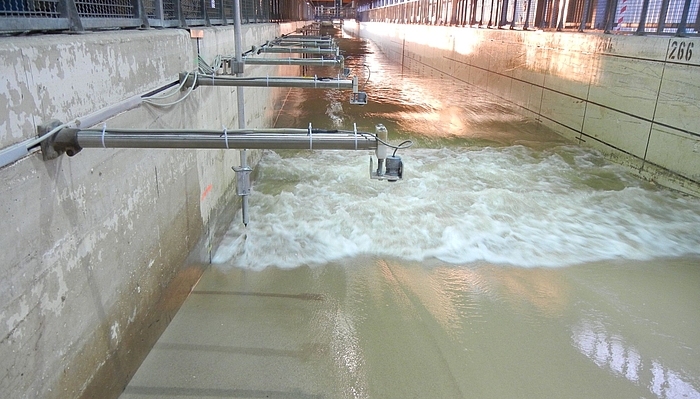
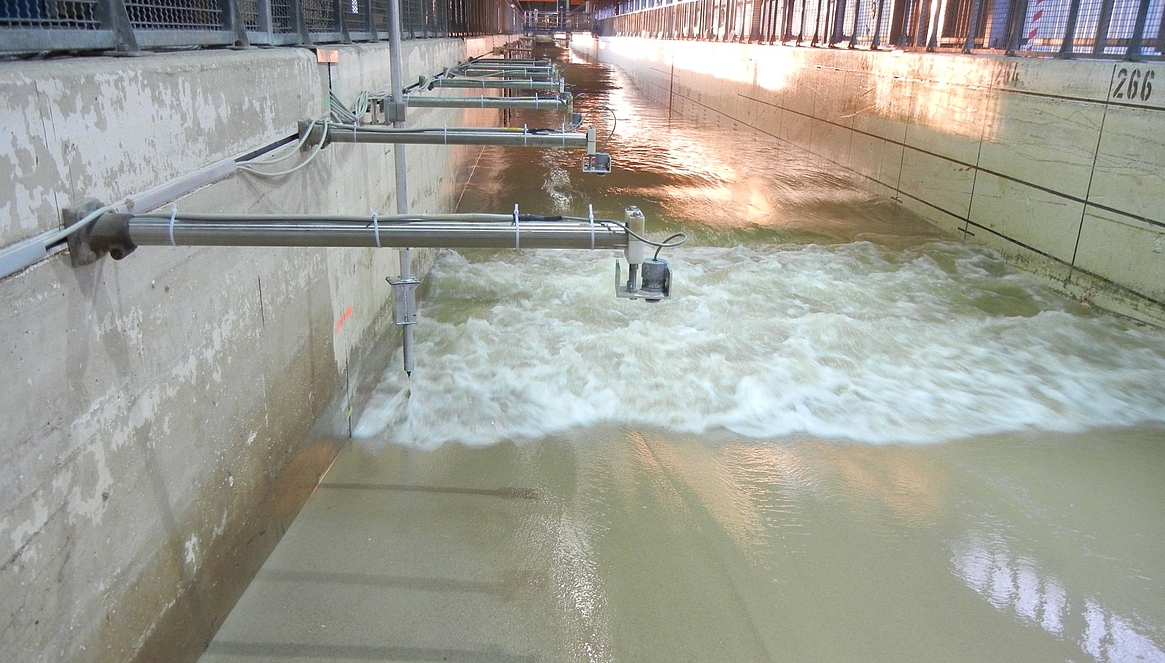 ©
Forschungszentrum Küste
©
Forschungszentrum Küste
Sediment transport
In order to sustainably control the natural erosion of sandy coasts and dunes and to better plan soft coastal protection measures such as sand nourishments, an understanding of wave-induced sediment transport and its underlying physical processes is essential. Likewise, when planning and dimensioning structures such as groynes or offshore wind turbines, their influence on sediment transport must be taken into account. Due to the high complexity of the transport processes, these can only be described mathematically by partly significant simplifying assumptions, so that the results of numerical simulations are subject to great uncertainties and require many further laboratory tests on a sufficiently large scale. Research questions are e.g.:
- Erosion and transport mechanisms under waves and currents
- Beach erosion and sand nourishments
- Dune erosion and dune reinforcement
- Influence of structures on sediment transport (near and far field)
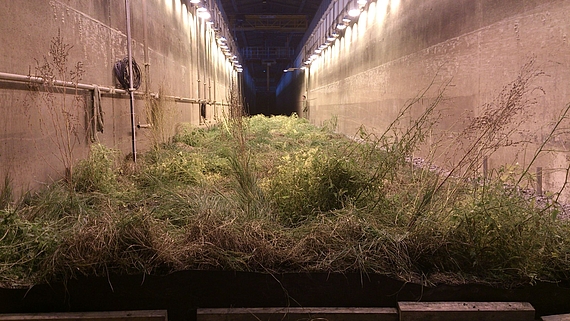
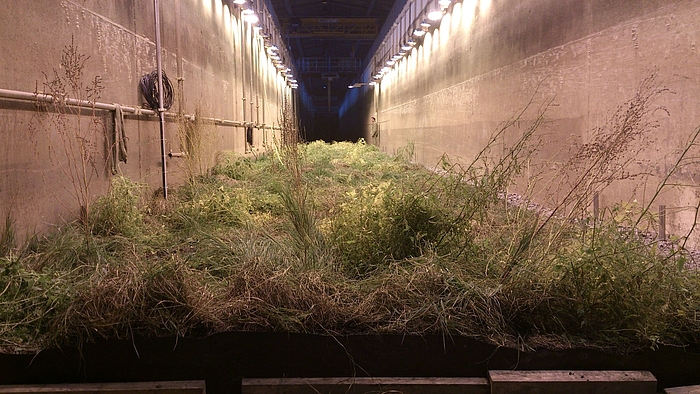
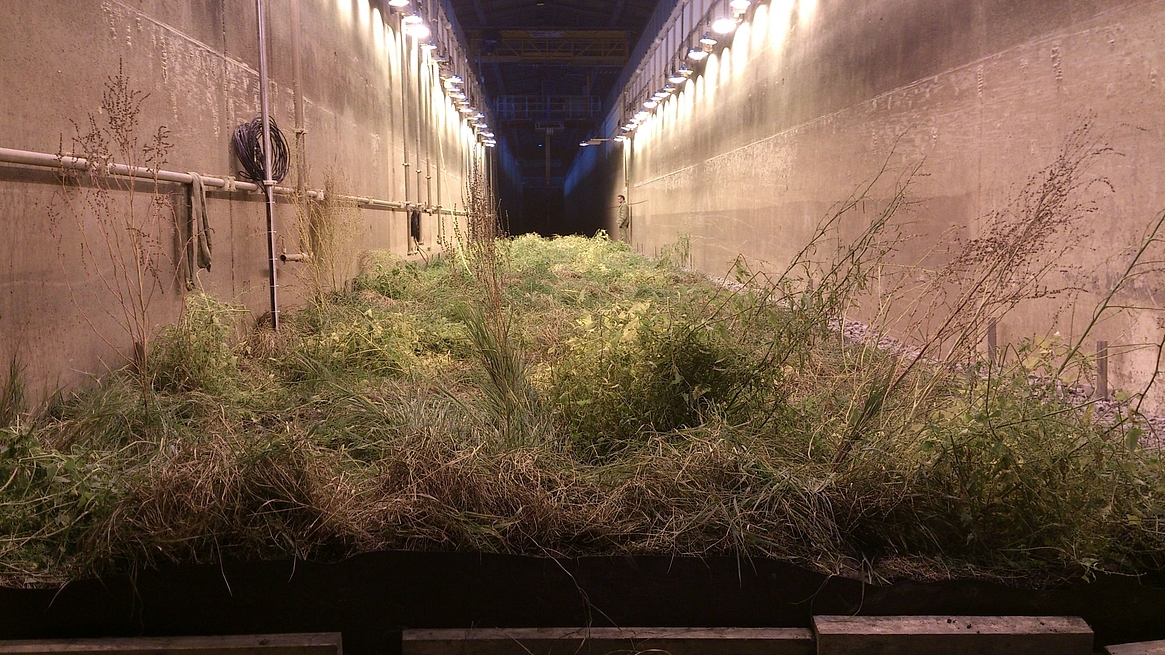 ©
Forschungszentrum Küste
©
Forschungszentrum Küste
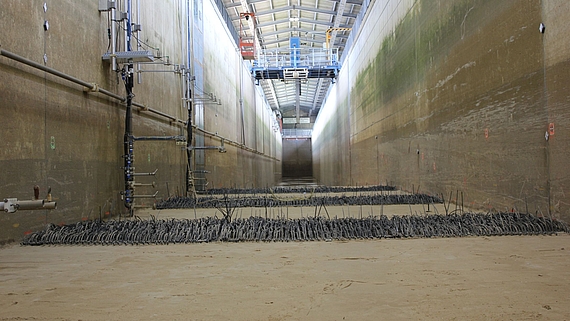
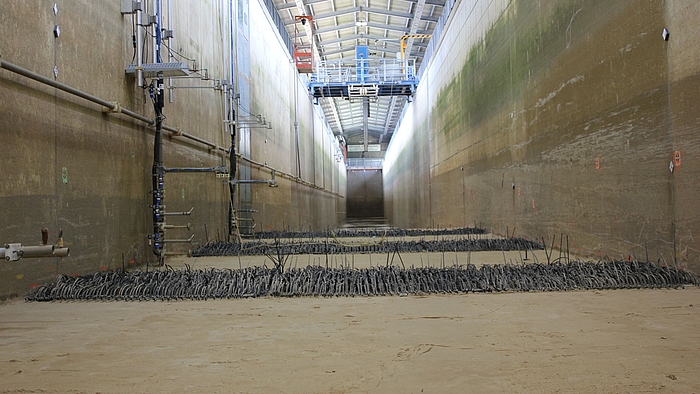
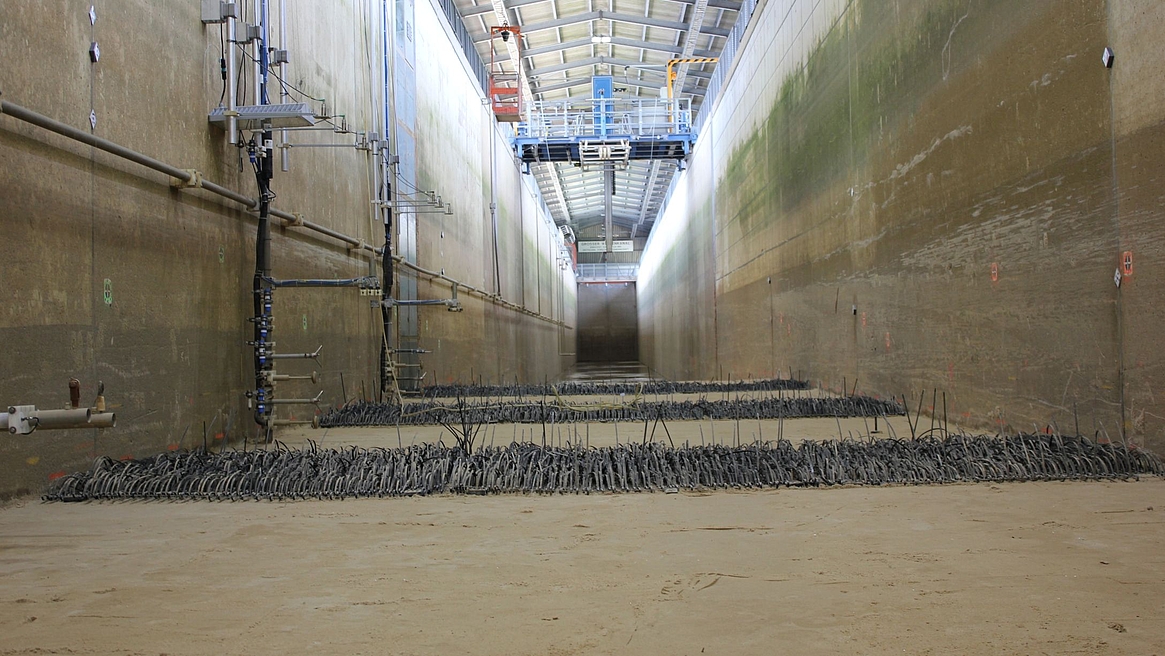 ©
Forschungszentrum Küste
©
Forschungszentrum Küste
Ecohydraulics
Interactions of biota (plants and animals) with waves and currents occur particularly in the tidal area along the coast, resulting in a damping of wave energy, a change of the current direction or in effects on sediment transport and erosion. Therefore, they are often referred to as "ecosystem engineers". However, viewed the other way around, changes in the sediment budget can also affect the establishment or maintenance of plants and animals. The research area ecohydraulics investigates how the services of these ecosystem engineers can be used for coastal protection and integrated into soft coastal protection measures. Laboratory tests are essential here in order to better understand the basic physical processes, for example:
- Wave attenuation by vegetation
- Deformation of plants under hydrodynamic force
- Turbulence within and around plant stands and animal colonies
- Sediment stabilization by roots and detritus
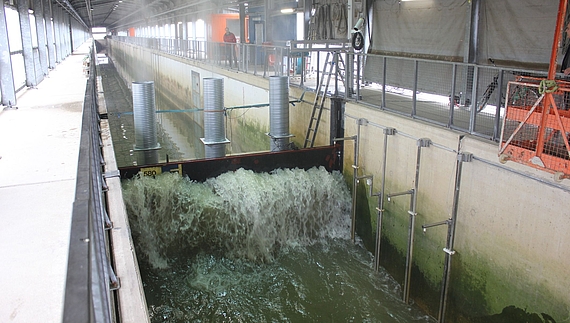
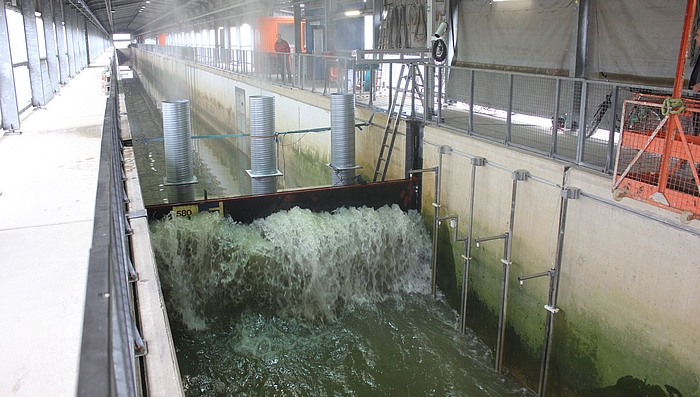
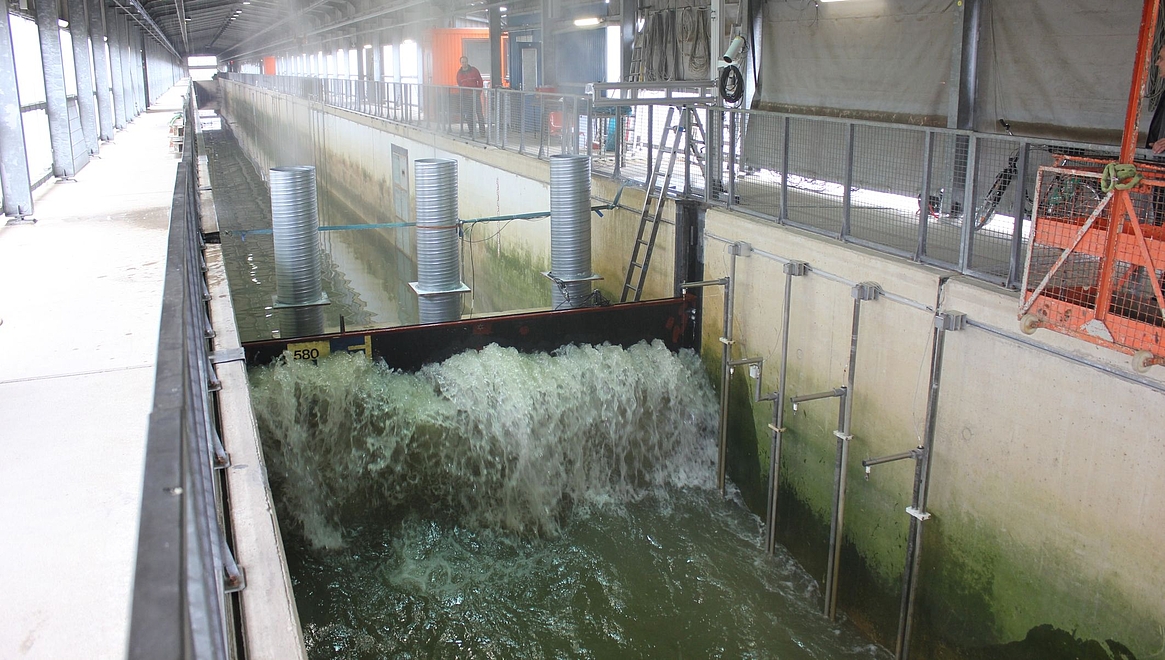 ©
Forschungszentrum Küste
©
Forschungszentrum Küste
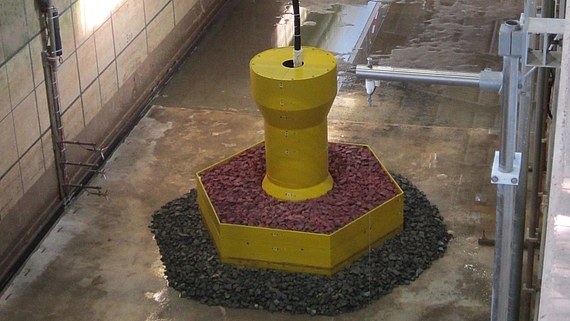
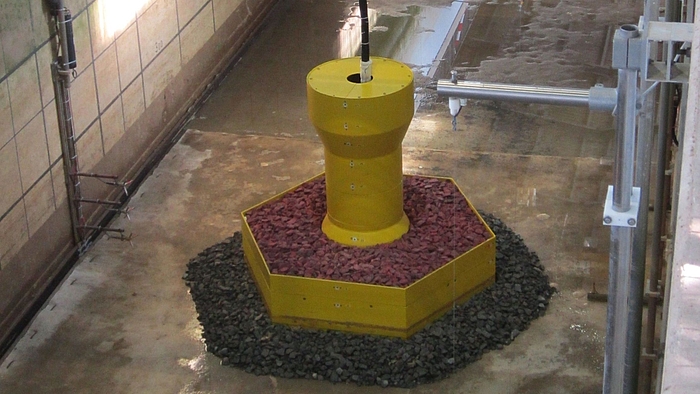
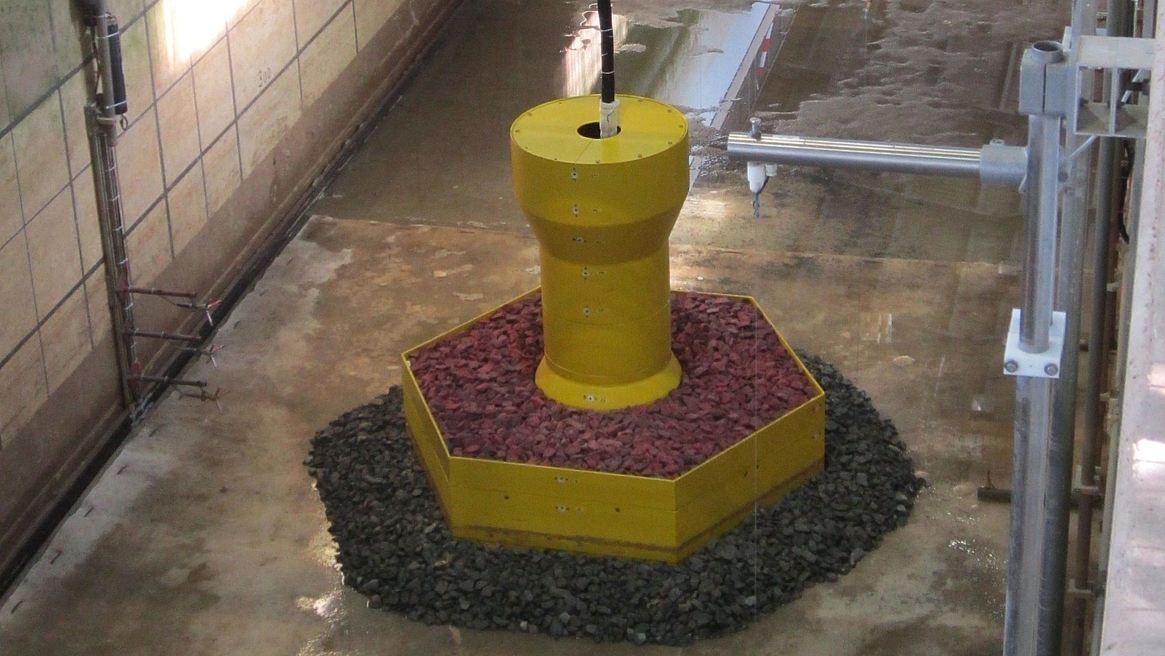 ©
Forschungszentrum Küste
©
Forschungszentrum Küste
Marine Energy
Renewable energies offer an answer to the challenges of climate change and the decline in fossil fuels. The use of energy from the coast and sea has great potential for sustainable energy supply. Offshore wind turbines, wave energy converters and tidal power plants, which are either floating or statically anchored to the seabed, offer sustainable solutions, but at the same time they are associated with major challenges. Using hydraulic laboratory tests, these challenges can be examined and the resulting questions answered. The scale is of particular importance here, for example in the case of:
- Wave loads under extreme conditions
- Scour formation and scour protection measures
- Wave-Structure-Soil Interaction
- Dynamic behavior of floating structures
- Optimizing the efficiency of wave energy converters
